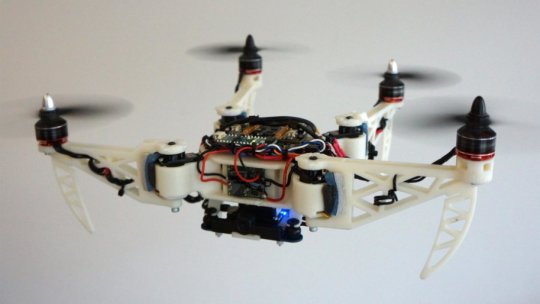GENEVA, Dec 13: Scientists have created a drone that can fold its wings mid-flight to squeeze through narrow gaps — such as a crack in a wall or a partially open window.
The flying robot could assist search and rescue teams inspect a damaged building after an earthquake or a fire and look for people trapped inside.
Researchers from the University of Zurich and Ecole Polytechnique Federale de Lausanne (EPFL) in Switzerland designed a drone inspired by birds that fold their wings in mid-air to cross narrow passages.
The new drone can squeeze itself to pass through gaps and then go back to its previous shape, all the while continuing to fly, researchers said.
“Our solution is quite simple from a mechanical point of view, but it is very versatile and very autonomous, with onboard perception and control systems,” said Davide Falanga, researcher at the University of Zurich.
In comparison to other drones, this morphing drone can manoeuvre in tight spaces and guarantee a stable flight at all times.
The team designed a quadrotor with four propellers that rotate independently, mounted on mobile arms that can fold around the main frame thanks to servo-motors.
The control system that adapts in real time to any new position of the arms, adjusting the thrust of the propellers as the centre of gravity shifts.
“The morphing drone can adopt different configurations according to what is needed in the field,” said Stefano Mintchev, researcher at EPFL.
The standard configuration is X-shaped, with the four arms stretched out and the propellers at the widest possible distance from each other.
When faced with a narrow passage, the drone can switch to a “H” shape, with all arms lined up along one axis or to a “O” shape, with all arms folded as close as possible to the body.
A “T” shape can be used to bring the onboard camera mounted on the central frame as close as possible to objects that the drone needs to inspect.
In the future, researchers hope to further improve the drone structure so that it can fold in all three dimensions.
Most importantly, they want to develop algorithms that will make the drone truly autonomous, allowing it to look for passages in a real disaster scenario and automatically choose the best way to pass through them.
“The final goal is to give the drone a high-level instruction such as ‘enter that building, inspect every room and come back’ and let it figure out by itself how to do it,” said Falanga. (AGENCIES)
Trending Now
E-Paper


